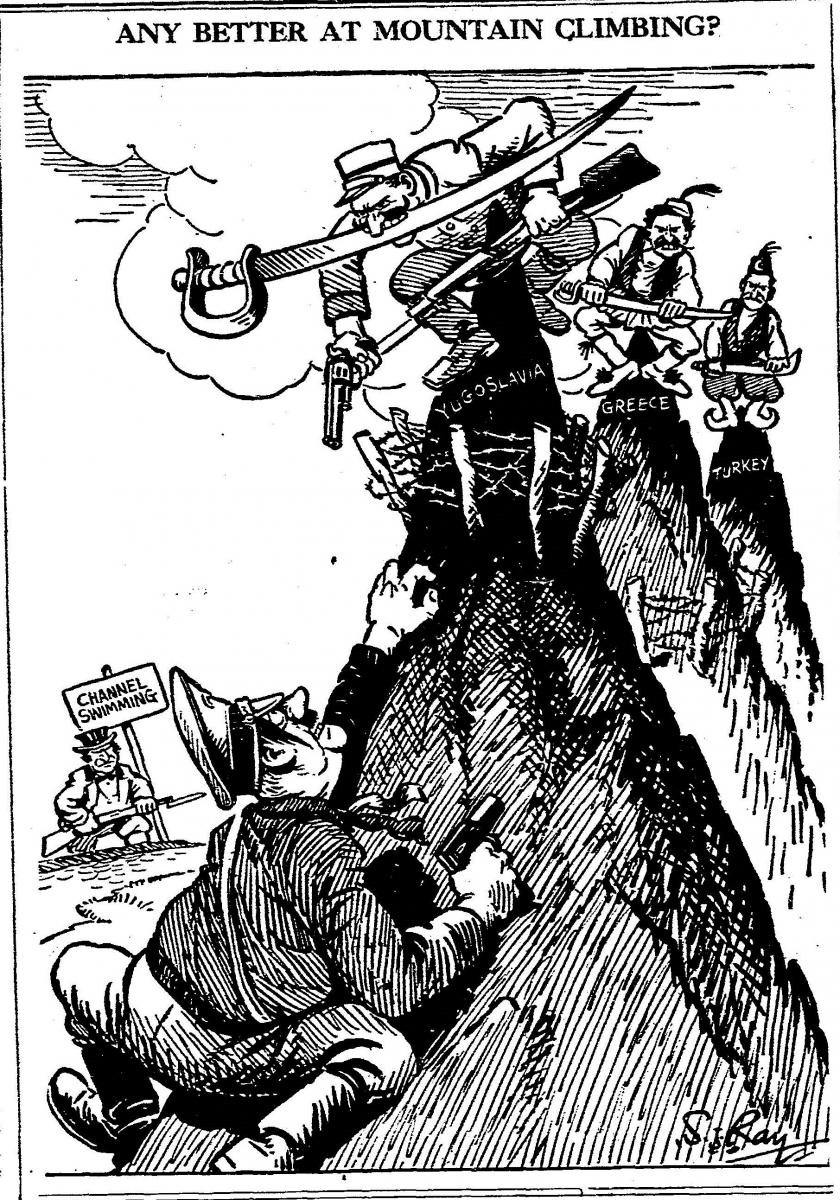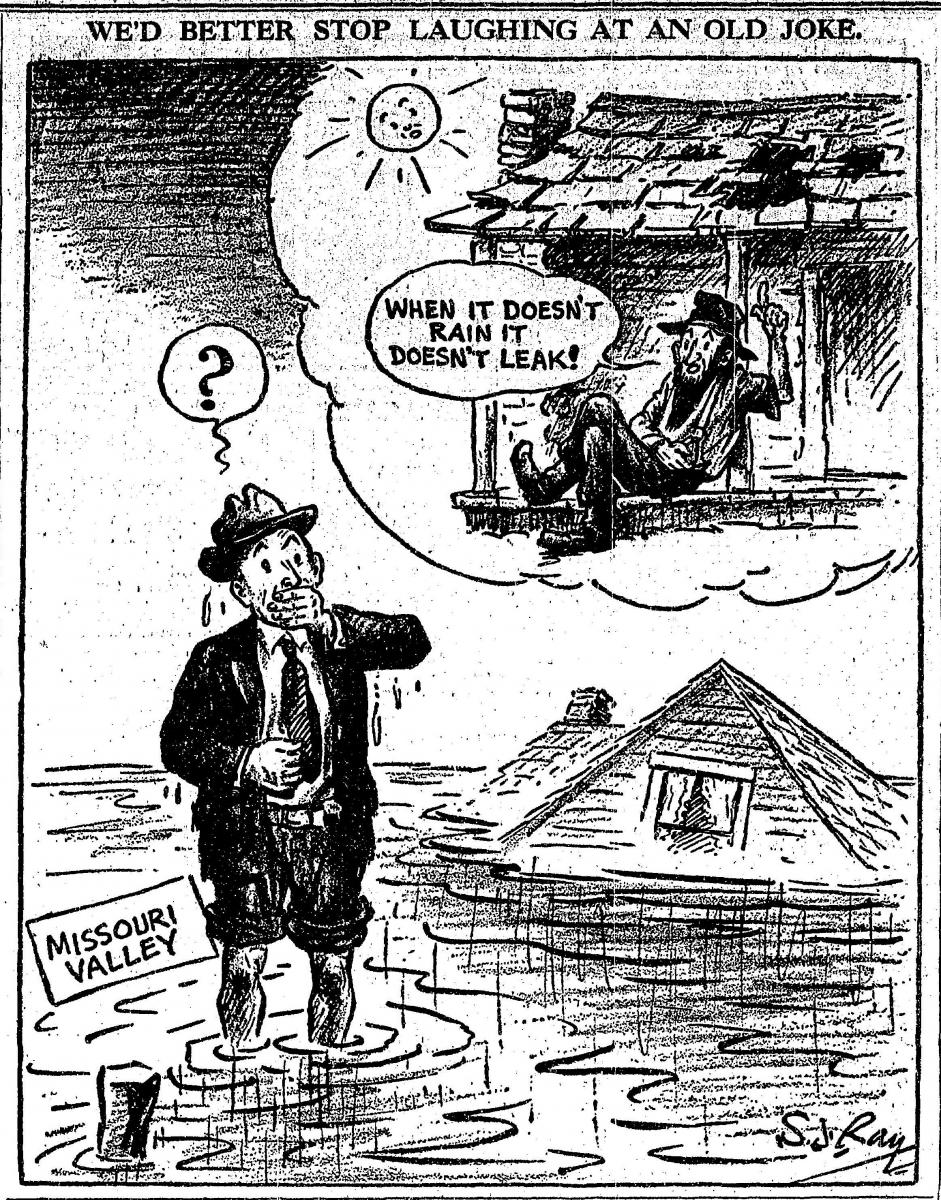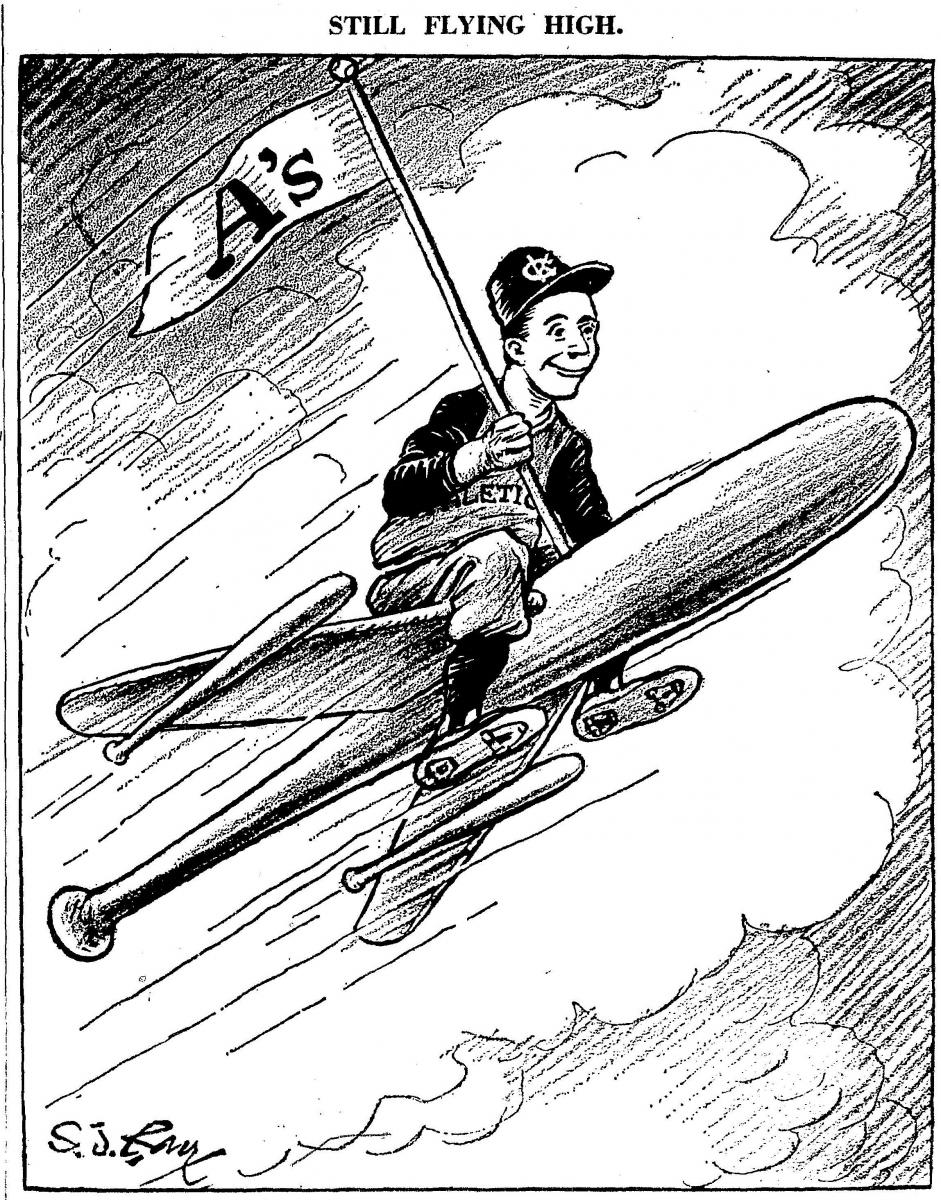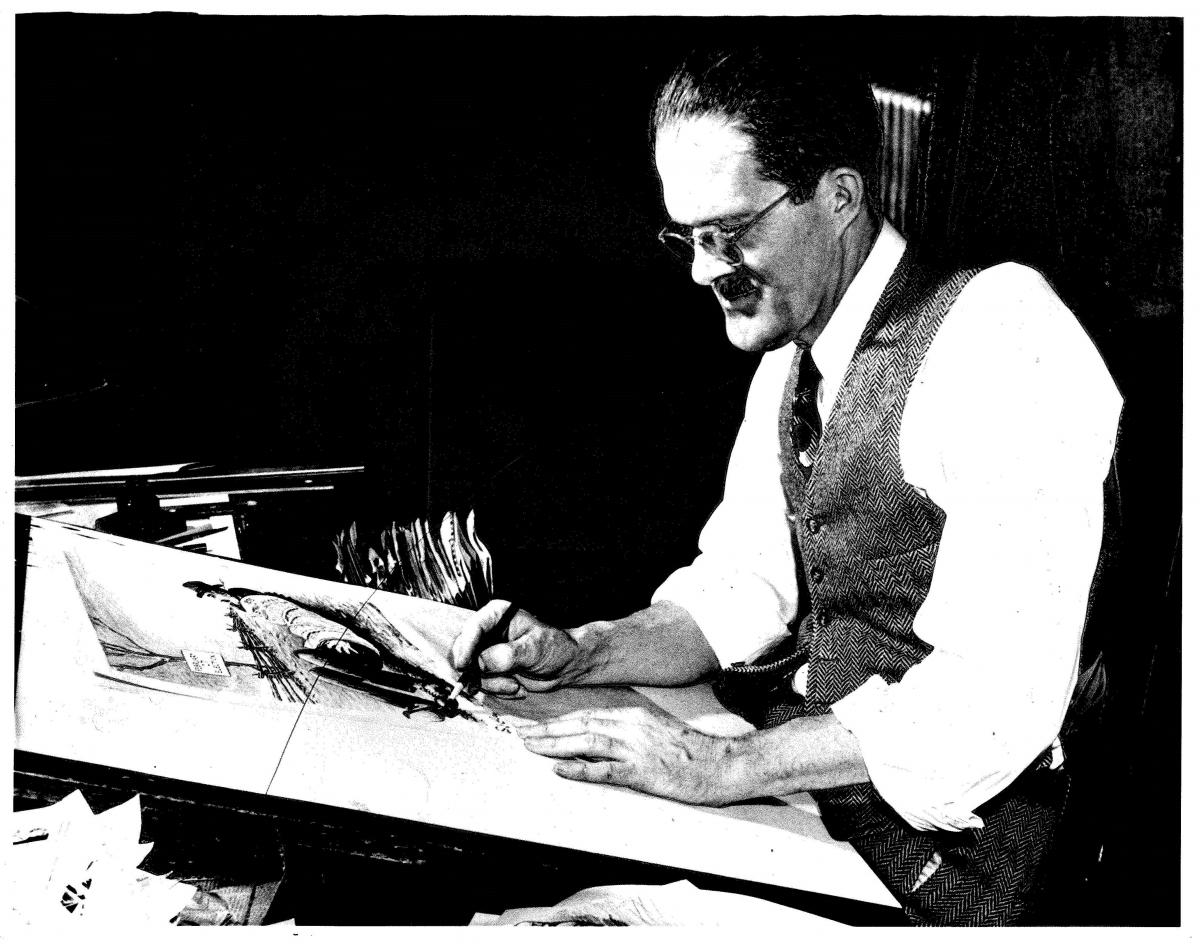History in Cartoons: The Artwork of S. J. Ray
During his 32 years as editorial cartoonist for The Kansas City Star, S. J. Ray amassed an impressive portfolio of roughly 10,000 cartoons. Ray’s artwork documented one of the most dynamic periods of American history, from 1931 to 1963, and his distinctive style is still remembered by many of The Star’s readers.
Silvey Jackson (S. J. or Sil) Ray was born on a farm in Chariton County, Missouri, on March 15, 1891. Though he received minimal academic training, he began working as an illustrator at The Kansas City Journal-Post in 1913 before joining the staff at The Star in 1915.
Ray’s budding career was interrupted when he left to serve in the U.S. Army from 1917 to 1919. He then studied in New York City under F. R. Gruger at the Arts Student League before resuming work in Kansas City.

In 1931, Ray became The Star’s editorial cartoonist, a position he held until his retirement in 1963. His work was featured six times per week on the editorial page, and the demand for artwork was constant. His distinctive cartoons depicted current events and politicians, and critics commended Ray for his ability to infuse his satirical caricatures with both humor and humanity. Franklin D. Roosevelt, Harry S. Truman, Winston Churchill, Charles de Gaulle, Adolf Hitler, and Joseph Stalin are just a few of the politicians and military leaders Ray drew during the World War II era.

While many of his cartoons focused on international affairs, Ray also depicted subjects specific to Kansas City politics, events, and pastimes, from the Great Flood of 1951 to professional baseball. Some of his popular cartoons portraying political boss Tom Pendergast can be found at the Harry S. Truman Library and Museum.


Ray’s work for The Star drew national attention, won awards from the U.S. Treasury Department and the Freedom Foundation, and was reprinted by the State Department to counter Soviet propaganda during the 1950s. Despite the recognition and accolades, Ray remained humble and partial to home. Once, he notoriously declined an invitation to lunch at the Pentagon, stating, “I won’t even go downtown for lunch. How can I make it to the Pentagon?”
After his retirement in 1963, Ray retreated to his 40-acre Clay County home, where he enjoyed painting rural scenes in watercolor. He died in 1970 at age 78.

The recently processed S. J. Ray Collection (SC208), which contains over 120 of Ray’s original cartoons, is now available to researchers in the Missouri Valley Room.
References:
“Cartoon Career Ends: S. J. Ray of the Star is Retiring,” The Kansas City Star, May 12, 1963.
“S. J. Ray, Cartoonist,” The Kansas City Star, February 5, 1970.
“Silvey J. Ray is Dead at 78,” The Kansas City Star, February 4, 1970.

